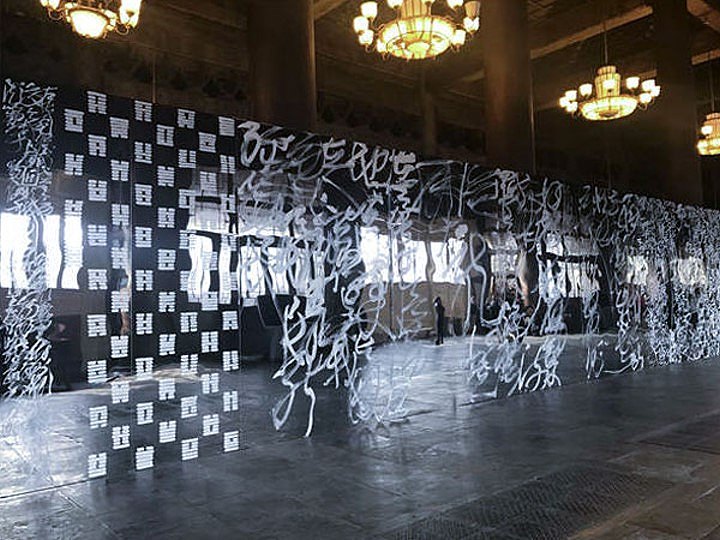ARTICLE

Chinese calligraphy in big format scripts, a "wild cursive" of erratic and dynamic strokes to represent I Ching.
Wang Dongling (1945) is a Chinese poet and calligrapher inspired by Buddhist and Taoist philosophies. He has been instructed with traditional techniques although during the 90's of the last century, he begun to combine them with experimental techniques, reinterpreting ancient forms and freeing the Chinese calligraphy from the conventional limitations of texts associated to written characters.

In classic forms, calligraphy has been considered as a genre sticked to texts but Dongling seems to have created a kind of "pictorial" and abstract art in which he combines Chinese aesthetics and techniques (body motion, rhythm, speed, a constant tension in the brushstroke) with Western influences (composition, style, colors).
Usually, the Chinese characters are a formal way for the calligrapher to transmit his state of mind and deepest feelings, following a strict order in strokes. Dongling's expansion includes a complete absence of a linear narrative framework, more related to the fact that, in the linguistic translations of ideograms, something is lost… For instance, when he was invited to perform in the opening of a group exhibition in Sweden called The changing landscape in Chine (2014). His assistant translated the title of the exhibition into Chinese language, later Dongling associated it to four I Ching hexagrams, and the translation of the latter ones into English finally was "The ultimate search for knowledge is understanding change in the universe". Let's think on this whole process at the time of appreciating an artwork.
In the decade of 2010, the artist made a set of white ink paintings which displayed more than twenty ideograms of The Book of Changes, in a transparent glass table of 105.6 ft long. The script, as expected, was of an unrecognizable style and, instead of focusing on the meaning of hexagrams, it was centered around the rhythm in lines.
Calligraphy has reached its total liberation and has been separated from its functional restrains, entering into a category of aesthetic appreciation without restraints. Thus, it reaches the genuine meaning of a purified nature in art.
Wang Dongling (2004)






Comments
Join and leave a message. I always answer personally, and as soon as possible.